Transparent Technologies 610M101SS M1 Utility Radio Transmitter User Manual Start Radio
Transparent Technologies, Inc. M1 Utility Radio Transmitter Start Radio
Users Manual
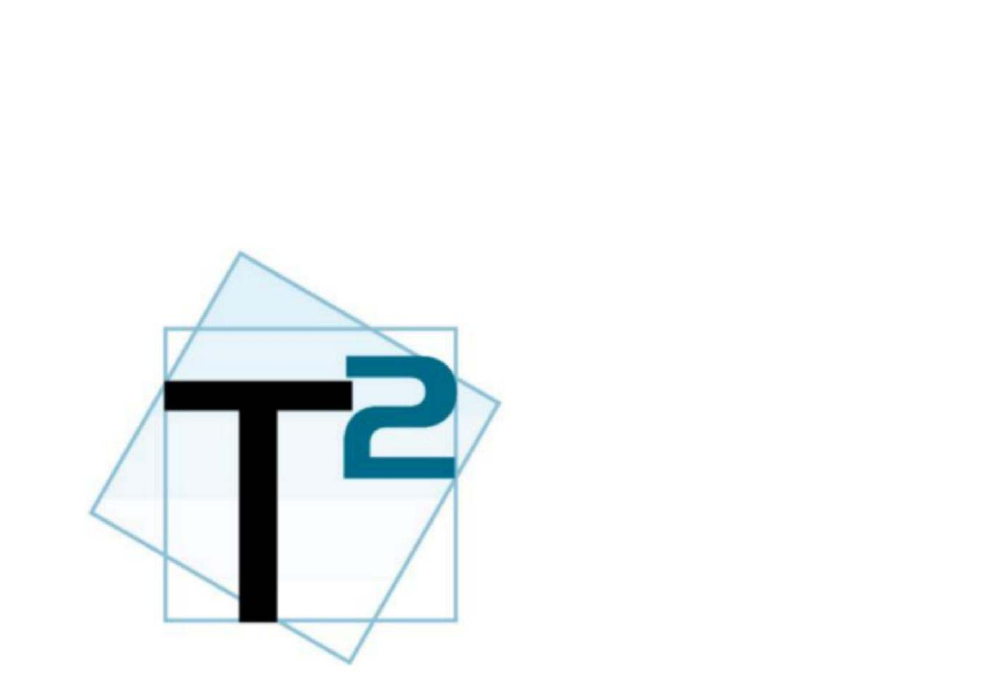
M
M1
1Utility
Radio
Transmitter
M1 Utility Radio Transmitter
Preliminary Documentation
Transparent Technologies, Inc.
www.transparenttech.com
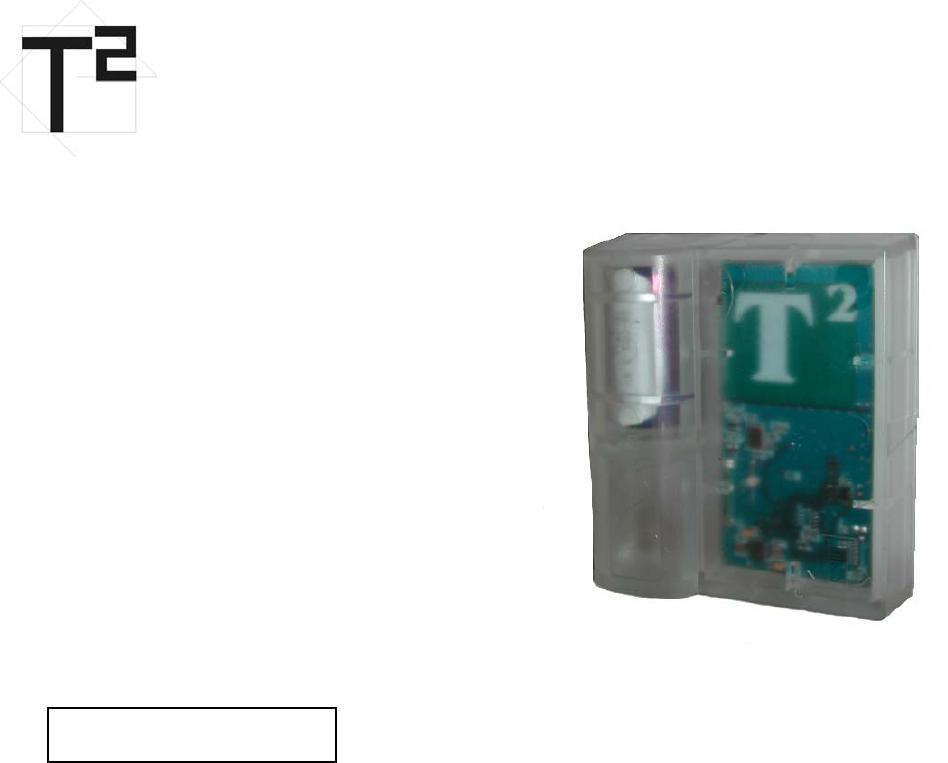
M
M1
1Utility
Radio
Transmitter
Transparent Technologies
introduces a simple, cost-effective
utility radio. The M1 radio is a
one-way transmitter which requires
no field configuration and is
compatible with existing utility
systems. The M1 operates in an
unlicensed mode in the 900-Mhz
range which requires no utility
regulation.
SPECIFICATIONS
Transmission: Base Mode Only
Regulatory: FCC Section 15.249
Temperature: -40°F to 158°F (-40°C to +70°C)
Humidity: 100%
Submersion: IP-68 Rating
Packaging: PCB and Connectors 100% Gel-encapsulated
Modified ABS-Marine Housing
Meter Interface: 3-Wire Encoder (ECR-II protocol)
Battery: Replaceable
Thionyl-Chloride Lithium
8.5 A-hr C-cell
Battery Life: 10 Years +
Transparent Technologies, Inc.
www.transparenttech.com
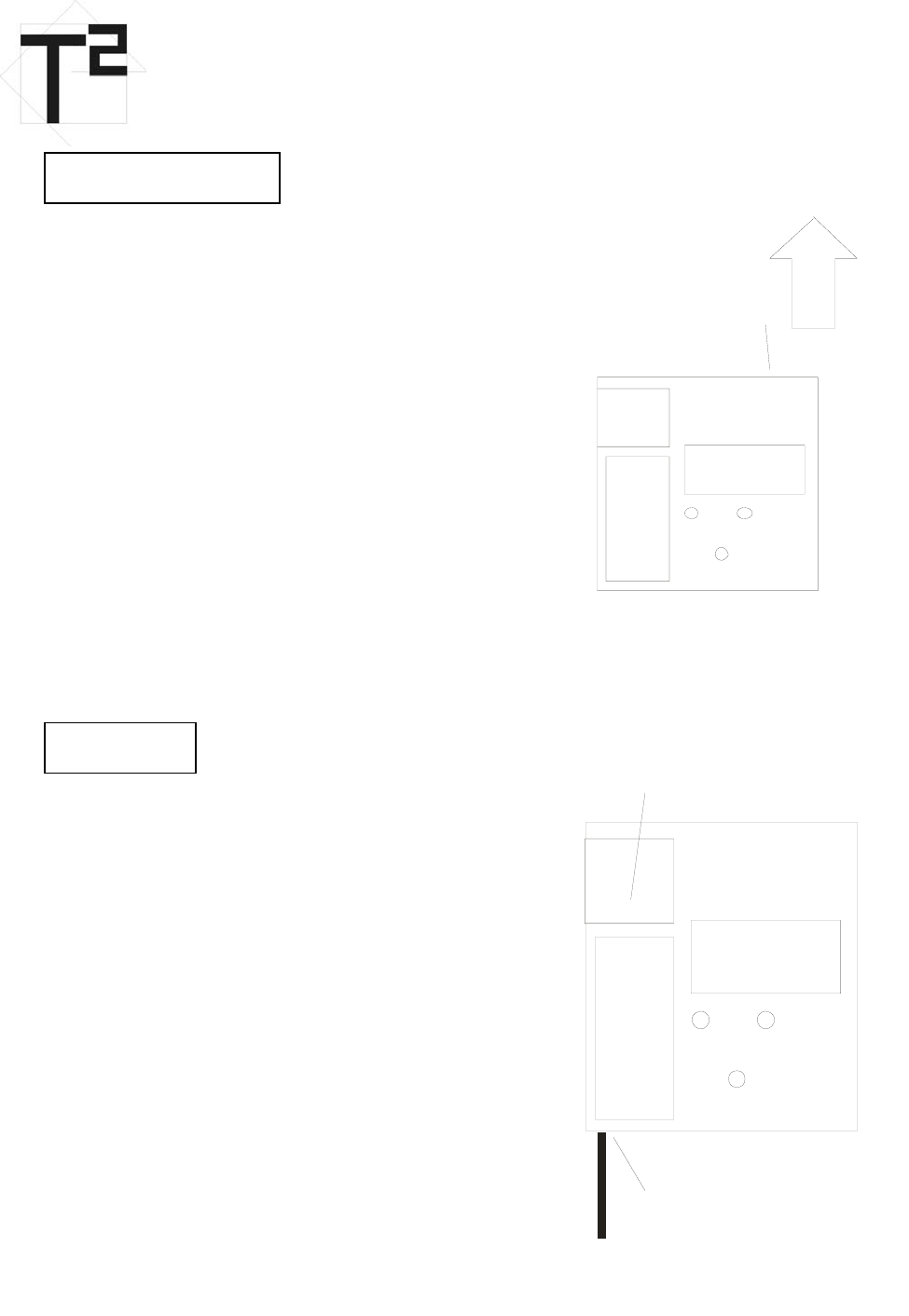
M
M1
1Utility
Radio
Transmitter
INSTALLATION
THIS
END
UP
The M1 can be installed either in indoor
or outdoor environments. The unit is
100% waterproof.
The M1 should always be installed vertically.
The backside of the unit indicates the proper
orientation.
For best transmission, the unit should not be
mounted directly on any metal surfaces, such as
pipes or valves. If mounting in a pit or vault, the
unit should be at least 8 inches
below the lid.
W
IRING
The M1 utilizes the defacto-standard ECR-II
communications protocol and standard wiring
conventions
Red: Clock/PWR
Green: Data
Black: Ground
The unit can be ordered with a pre-wired
cable in 5-ft increments or with leads ready
for splicing in the wiring chamber.
Transparent Technologies, Inc.
www.transparenttech.com
Wiring Chamber
Cable Exit
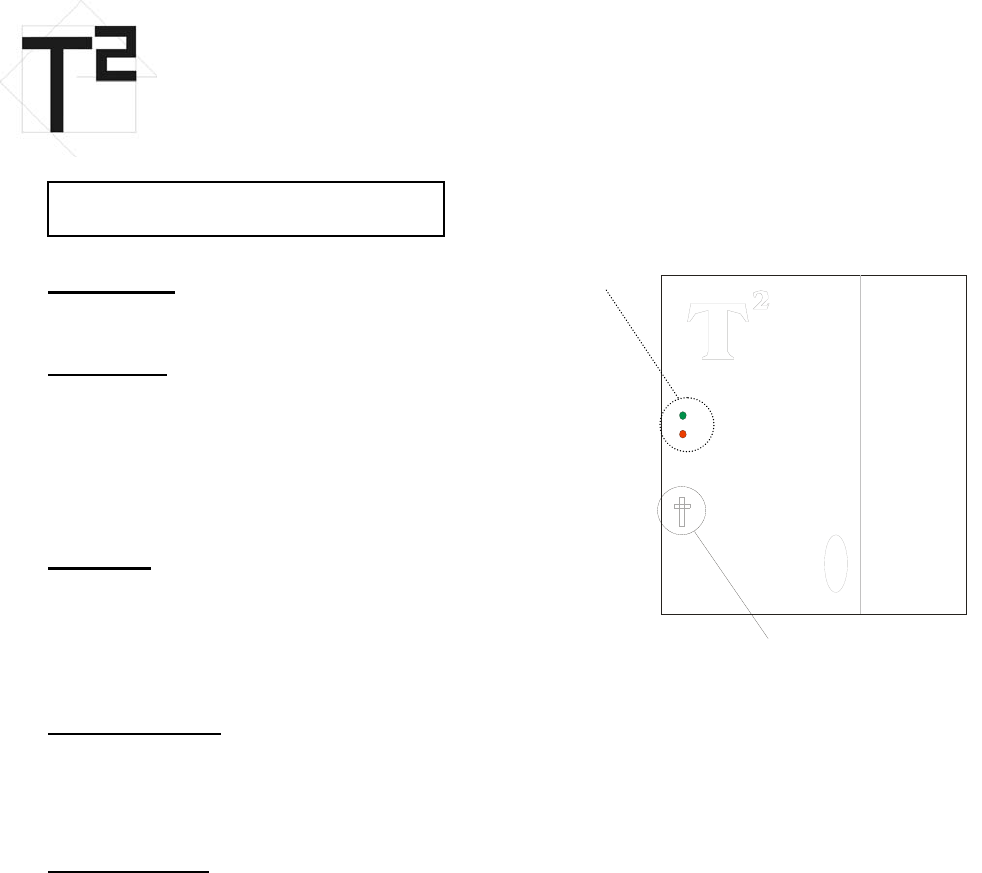
M
M1
1Utility
Radio
Transmitter
GENERAL OPERATIONS
Initial Mode
Initial mode at startup is sleep mode.
Start Radio
To start the radio, briefly position magnet on marker
on the front (see diagram). A general sweep from top to
bottom across the marker will work best. All subsequent
positioning of the magnet on marker will force an
immediate read of the MIU.
Soft Reset
Holding the magnet on the marker for 10 seconds or more
will cause a soft reset of the radio. The initial state after a
soft reset will be sleep mode. The unit will need to be
started as above.
Front View of M1
Marke
r
LEDs
Force MIU Read
Positioning of a magnet on the marker for anything less than 10 seconds will force a new
read of the MIU.
LED Indicators
Green LED will flash during every radio transmission. This will only take place for one
minute after a Radio Start and/or a Force MIU Read.
Red LED will flash during every radio transmission that has a tamper count (a failure to
obtain an error-free reading of the MIU). This will only take place for one minute after a
Radio Start and/or a Force MIU Read.
Both Green and Red LED’s On a Soft-Reset will indicate (turn on) when the 10-second
reset limit has been reached. This indicator will cease when the magnet is removed.
Transparent Technologies, Inc.
www.transparenttech.com

M
M1
1Utility
Radio
Transmitter
RF Transmission
The M1 transmits the following data on its RF transmission:
ID number
Meter Reading
Group Code
Error Code
CRC (for error checking)
The M1 transmits its signal every five (5) seconds.
Meter interrogation
The M1 is hard-coded to interrogate the encoded register once every hour. Upon
successful interrogation, the M1 will update its memory with the register’s ID and
reading. Unsuccessful
Transparent Technologies, Inc.
www.transparenttech.com

M
M1
1Utility
Radio
Transmitter
Appendix A – FCC Information
15.21 Information to user. - The users manual or instruction manual for an intentional
or unintentional radiator shall caution the user that changes or modifications not
expressly approved by the party responsible for compliance could void the user's
authority to operate the equipment.
15.27 Special accessories.
(a) Equipment marketed to a consumer must be capable of complying with the necessary
regulations in the configuration in which the equipment is marketed. Where special
accessories, such as shielded cables and/or special connectors, are required to enable an
unintentional or intentional radiator to comply with the emission limits in this part, the
equipment must be marketed with, i.e., shipped and sold with, those special accessories.
However, in lieu of shipping or packaging the special accessories with the unintentional
or intentional radiator, the responsible party may employ other methods of ensuring that
the special accessories are provided to the consumer, without additional charge, at the
time of purchase. Information detailing any alternative method used to supply the special
accessories shall be included in the application for a grant of equipment authorization or
retained in the verification records, as appropriate. The party responsible for the
equipment, as detailed in §2.909 of this chapter, shall ensure that these special
accessories are provided with the equipment. The instruction manual for such devices
shall include appropriate instructions on the first page of the text concerned with the
installation of the device that these special accessories must be used with the device. It is
the responsibility of the user to use the needed special accessories supplied with the
equipment.
(b) If a device requiring special accessories is installed by or under the supervision of the
party marketing the device, it is the responsibility of that party to install the equipment
using the special accessories. For equipment requiring professional installation, it is not
necessary for the responsible party to market the special accessories with the equipment.
However, the need to use the special accessories must be detailed in the instruction
manual, and it is the responsibility of the installer to provide and to install the required
accessories.
(c) Accessory items that can be readily obtained from multiple retail outlets are not
considered to be special accessories and are not required to be marketed with the
equipment. The manual included with the equipment must specify what additional
components or accessories are required to be used in order to ensure compliance with this
part, and it is the responsibility of the user to provide and use those components and
accessories.
(d) The resulting system, including any accessories or components marketed with the
equipment, must comply with the regulations.
Transparent Technologies, Inc.
www.transparenttech.com

M
M1
1Utility
Radio
Transmitter
Appendix B - FCC Definitions
15.3(h) Class A digital device. A digital device that is marketed for use in a
commercial, industrial or business environment, exclusive of a device which is marketed
for use by the general public or is intended to be used in the home.
15.3(i) Class B digital device. A digital device that is marketed for use in a residential
environment notwithstanding use in commercial, business and industrial environments.
Examples of such devices include, but are not limited to, personal computers, calculators,
and similar electronic devices that are marketed for use by the general public.
NOTE: The responsible party may also qualify a device intended to be marketed in a
commercial, business or industrial environment as a Class B device, and in fact is
encouraged to do so, provided the device complies with the technical specifications
for a Class B digital device. In the event that a particular type of device has been
found to repeatedly cause harmful interference to radio communications, the
Commission may classify such a digital device as a Class B digital device, regardless
of its intended use.
(a) For a Class A digital device or peripheral, the instructions furnished the user
shall include the following or similar statement, placed in a prominent location in the text
of the manual:
This equipment has been tested and found to comply with the limits for a Class A digital
device, pursuant to Part 15 of the FCC Rules. These limits are designed to provide
reasonable protection against harmful interference when the equipment is operated in a
commercial environment. This equipment generates, uses, and can radiate radio
frequency energy and, if not installed and used in accordance with the instruction manual,
may cause harmful interference to radio communications. Operation of this equipment in
a residential area is likely to cause harmful interference in which case the user will be
required to correct the interference at his own expense.
(b) For a Class B digital device or peripheral, the instructions furnished the user
shall include the following or similar statement, placed in a prominent location in the text
of the manual:
This equipment has been tested and found to comply with the limits for a Class B digital
device, pursuant to Part 15 of the FCC Rules. These limits are designed to provide
reasonable protection against harmful interference in a residential installation. This
equipment generates, uses and can radiate radio frequency energy and, if not installed and
used in accordance with the instructions, may cause harmful interference to radio
communications. However, there is no guarantee that interference will not occur in a
Transparent Technologies, Inc.
www.transparenttech.com

M
M1
1Utility
Radio
Transmitter
particular installation. If this equipment does cause harmful interference to radio or
television reception, which can be determined by turning the equipment off and on, the
user is encouraged to try to correct the interference by one or more of the following
measures:
-- Reorient or relocate the receiving antenna.
-- Increase the separation between the equipment and receiver.
-- Connect the equipment into an outlet on a circuit different from that to which the
receiver is connected.
-- Consult the dealer or an experienced radio/TV technician for help.
(c) The provisions of paragraphs (a) and (b) of this section do not apply to digital
devices exempted from the technical standards under the provisions of §15.103.
(d) For systems incorporating several digital devices, the statement shown in
paragraph (a) or (b) of this section needs to be contained only in the
instruction manual for the main control unit.
Transparent Technologies, Inc.
www.transparenttech.com
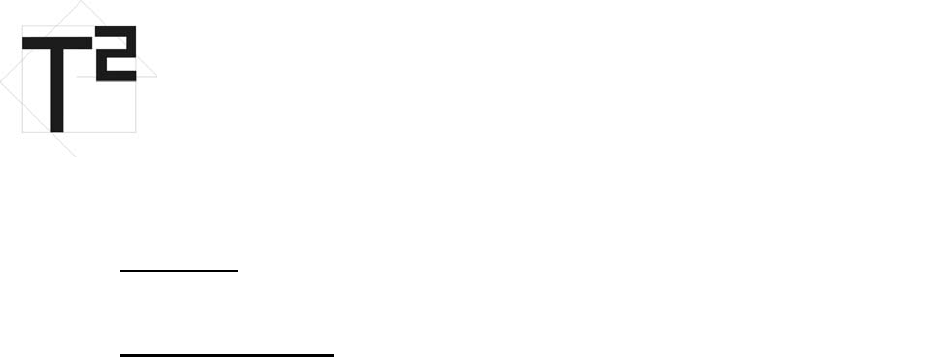
Transparent Technologies, Inc.
www.transparenttech.com
M
M1
1Utility
Radio
Transmitter
Appendix C - Canada RSS-210
• All devices: The following note must be conspicuously placed in the user manual:
“The term “IC:” before the radio certification number only signifies that Industry
of Canada technical specifications were met.”
• Required Statement: The following statement must be either in the manual or on
the device: “Operation is subject to the following two conditions: (1) this device
may not cause interference, and (2) this device must accept any interference,
including interference that may cause undesired operation of the device.”